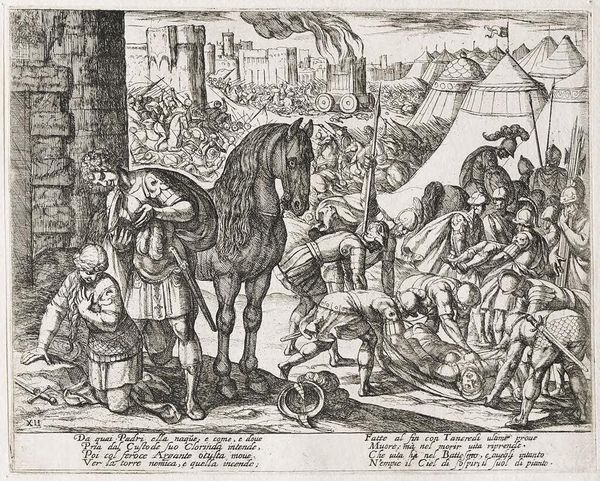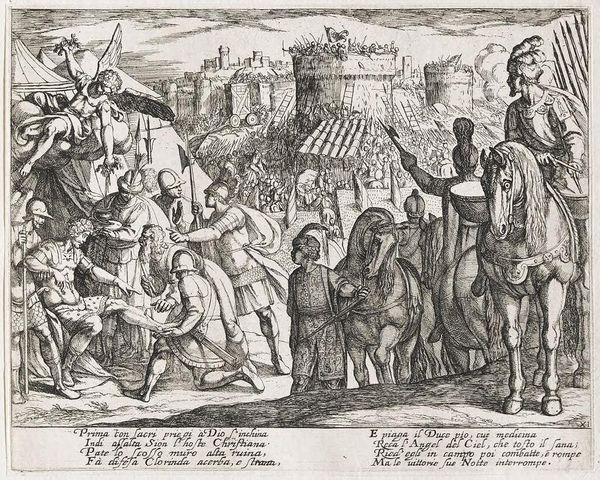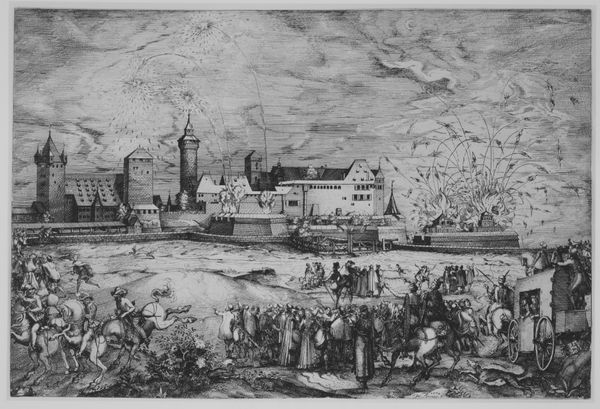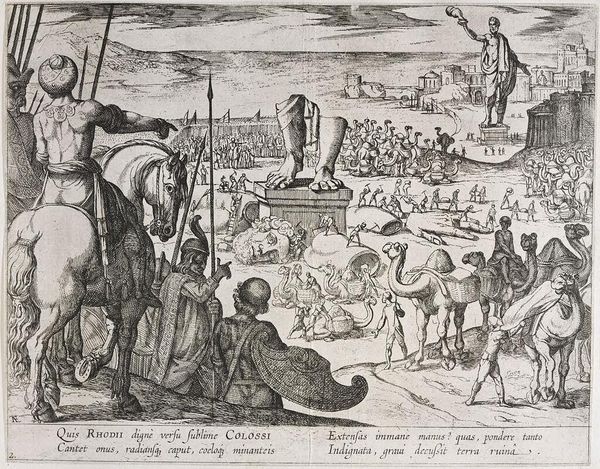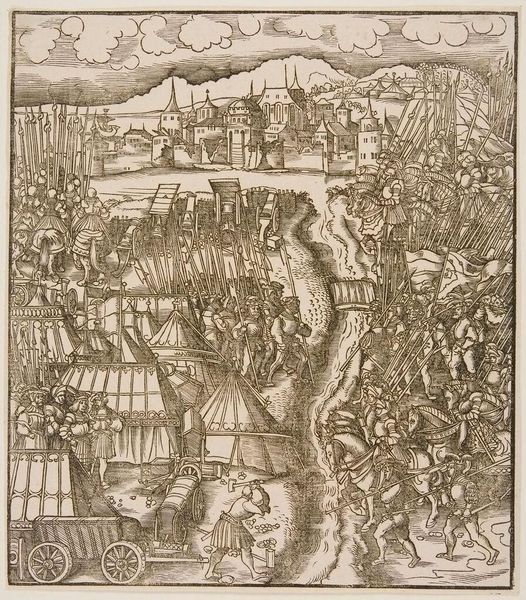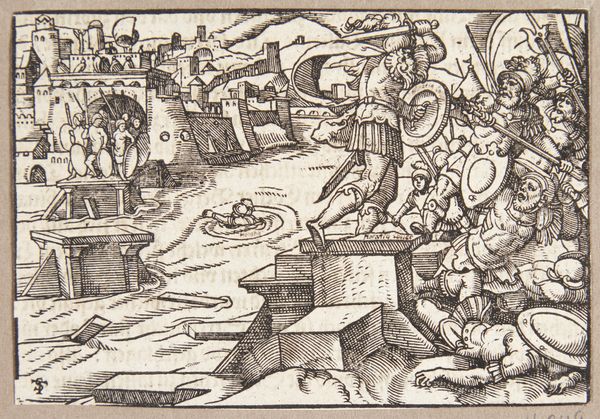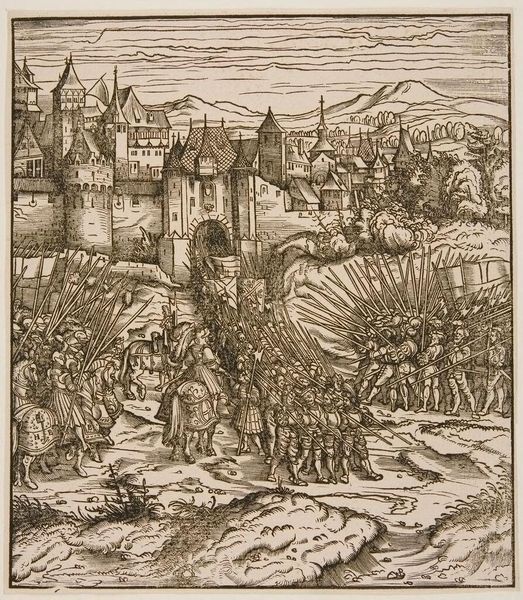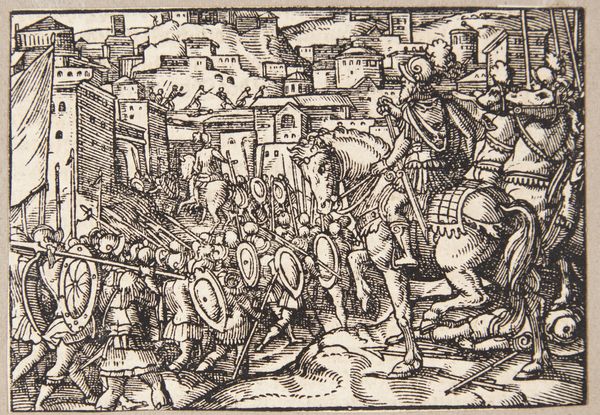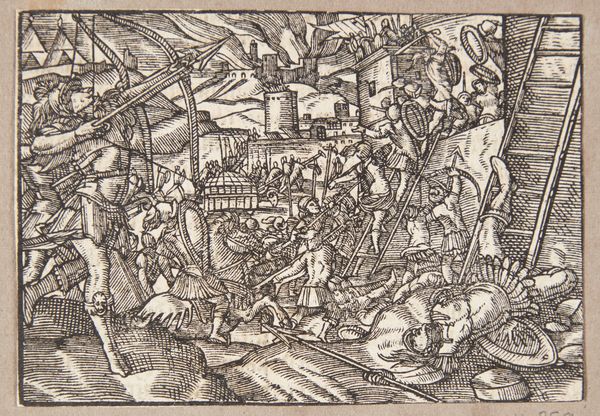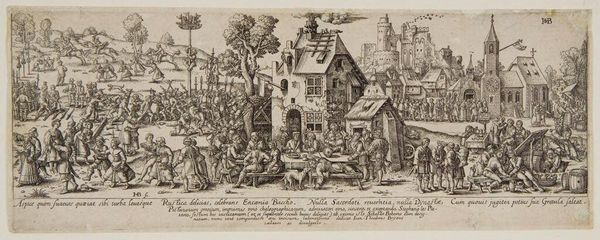
drawing, print, paper, ink, woodcut, engraving, architecture
#
drawing
#
medieval
#
narrative-art
# print
#
pen illustration
#
landscape
#
figuration
#
paper
#
ink line art
#
ink
#
geometric
#
woodcut
#
line
#
history-painting
#
musical-instrument
#
northern-renaissance
#
engraving
#
architecture
Dimensions: Block: 12 13/16 × 16 1/8 in. (32.5 × 41 cm) Sheet: 13 9/16 × 16 5/16 in. (34.5 × 41.5 cm)
Copyright: Public Domain
This is ‘Tabula Cebetis’ made by David Kandel, dating from the 16th century. It's a woodcut, meaning the artist carved the image into a block of wood, applied ink to the raised surface, and then pressed it onto paper. Look closely and you'll notice the incredible detail achieved through the carving process. The stark contrast between black ink and the white paper creates a dramatic effect, typical of the woodcut technique. The lines are crisp and precise, defining the forms and textures within the image. Notice how Kandel uses hatching and cross-hatching, to create depth and shadow. Woodcut, as a printing method, allowed for the relatively quick reproduction of images and texts. This was a significant development in the history of visual communication, especially as it made art more accessible to a wider audience. In that sense, it's important to remember that the making process is tied to wider social issues of labor, politics and consumption, and the amount of work involved in the production process. Appreciating this connection between material, making, and context is vital in understanding the full meaning of the artwork, which challenges traditional distinctions between fine art and craft.
Comments
No comments
Be the first to comment and join the conversation on the ultimate creative platform.
